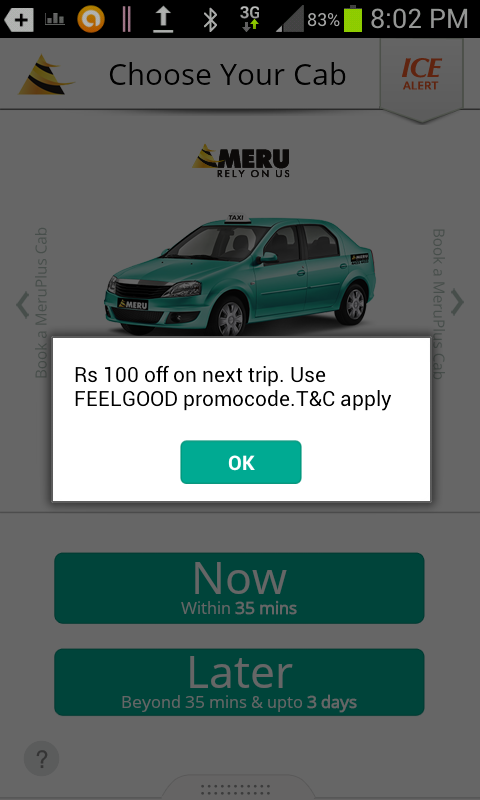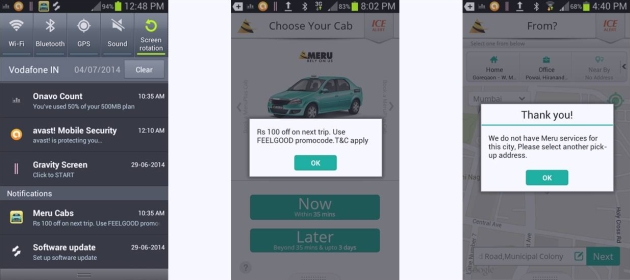 I recently received an offer for INR 100 discount on my next trip on Meru Cabs, India’s leading cab dispatch company. To redeem this offer, I’d need to enter a certain code when I used the company’s mobile app to book my next ride.
I recently received an offer for INR 100 discount on my next trip on Meru Cabs, India’s leading cab dispatch company. To redeem this offer, I’d need to enter a certain code when I used the company’s mobile app to book my next ride.
My first reaction to this offer was, “How the heck am I supposed to remember this code when I book my next ride?” Meru Cabs doesn’t operate where I live. While I do visit the cities where it does, it’d be several weeks until my next trip is likely to happen. Trying to remember the code until then is asking for too much. Of course, I can always ruffle through hundreds of pictures on my smartphone gallery to locate this offer when I place my next order. But that’s too much trouble for saving a hundred bucks.
So, this offer joined the heap of so many others that I regularly toss out because they’re irrelevant or unredeemable or both.
This got me thinking why Meru Cabs couldn’t automatically apply this discount whenever I made my next booking without requiring me to remember a code. If it did that, I’d surely come out feeling that the company rewarded my loyalty. Since that’d be a major goal of any customer engagement program, shouldn’t all companies including Meru Cabs follow this approach?
More importantly, will they?
Maybe not. Because, in addition to rewarding loyalty, brands have another important CEM goal, and that’s to “drive repeat purchase”. That goal can’t be achieved by automatically applying the discount on the next order – after all, what’s the guarantee that there’ll be a “next order” at all?
It’s ironical how, in trying to drive repeat purchase, a brand misses out on the low hanging fruit of rewarding loyalty.
While both goals are valid, there’s often a conflict in trying to achieve them simultaneously. Some degree of tradeoff is required. Crafting targeted offers to fulfill one goal at a time could be a good place to begin the tightrope walk between the twin CEM objectives of “driving repeat purchase” and “rewarding loyalty”.
UPDATE DATED 3 NOVEMBER 2021:
I keep getting many promo codes from Uber via SMS and in-app PUSH notifications. As soon as I tap the code, the app opens, goes automatically to the screen where I need to enter the code, and prefills the code – all I need to do is to hit one button and the code is applied immediately. It’s also invoked automatically on my next ride, whenever that happens. In short, Uber solves the problem I described in the original post. Going by my earlier prediction, that should have curbed repeat purchase but in practice, it has not: Uber has been my go-to rideshare provider for the past five-plus years. Meru Cabs has virtually disappeared. #GoFigure!
